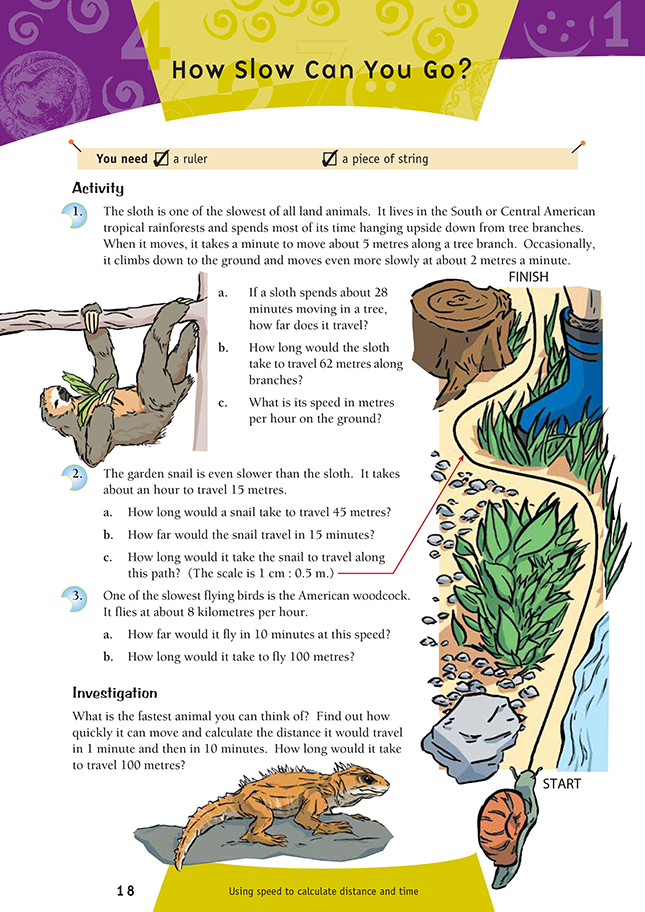This is a level 4 number activity from the Figure It Out series. It relates to Stage 7 of the Number Framework.
A PDF of the student activity is included.
Click on the image to enlarge it. Click again to close. Download PDF (347 KB)
calculate speeds
FIO, Level 3-4, Number, Book 2, How Slow Can You Go? page 18
A ruler
A piece of string
Rate problems such as those in this activity are difficult to model with concrete materials, so students who attempt this activity should be strongly multiplicative and at least at the advanced multiplicative stage of the Number Framework.
This activity provides basic scientific information on distance, time, and speed and requires students to use this information in their calculations. The use of ratio tables can enhance the students’ understanding of the relationship between time, distance, and speed. The formulae that they need to use are: distance = speed x time, speed = distance ÷ time, or time = distance ÷ speed.
In question 1a: distance = 5 metres per minute x 28 minutes = 140 metres
In 1b: time = 62 metres ÷ 5 metres per minute = 12.4 minutes (or 12 minutes 24 seconds)
In question 1c, the speed is converted from metres per minute to metres per hour by multiplying by 60 (because there are 60 minutes in 1 hour): 2 metres per minute x 60 = 120 metres per hour.
Question 2 is ideal for using ratio tables (or double number lines):
So, in 2a: 15 metres + 30 metres = 45 metres, so 1 hour + 2 hours = 3 hours.
In question 3a, the students need to remember that 10 minutes is 1/6 of an hour because the speed is in kilometres per hour.
Distance = speed x time
= 8 kilometres per hour x 10 ÷ 60 hours (or 8 ÷ 6)
= 11/3 kilometres
In 3b: time = distance ÷ speed
= 0.1 kilometres ÷ 8 kilometres per hour
= 0.0125 hours
= 0.0125 x 60 minutes
= 0.75 minutes x 60 seconds
= 45 seconds
Investigation
The investigation could be linked with the investigation on page 14 of the students’ book. See also the comments on investigations in the notes for page 11.
Answers to Activity
1. a. About 140 m
b. About 12.4 min. (12 min 24 s)
c. About 120 m/h
2. a. About 3 hrs
b. About 3.75 m
c. About 40 min. (The path measures about 20 cm, which is 10 m according to the scale. 10 m is 2/3 of 15 m, and 2/3 of 60 min is 40 min.)
3. a. About 11/3 km
b. About 0.75 min. (45 s)
Investigation
Answers will vary.
